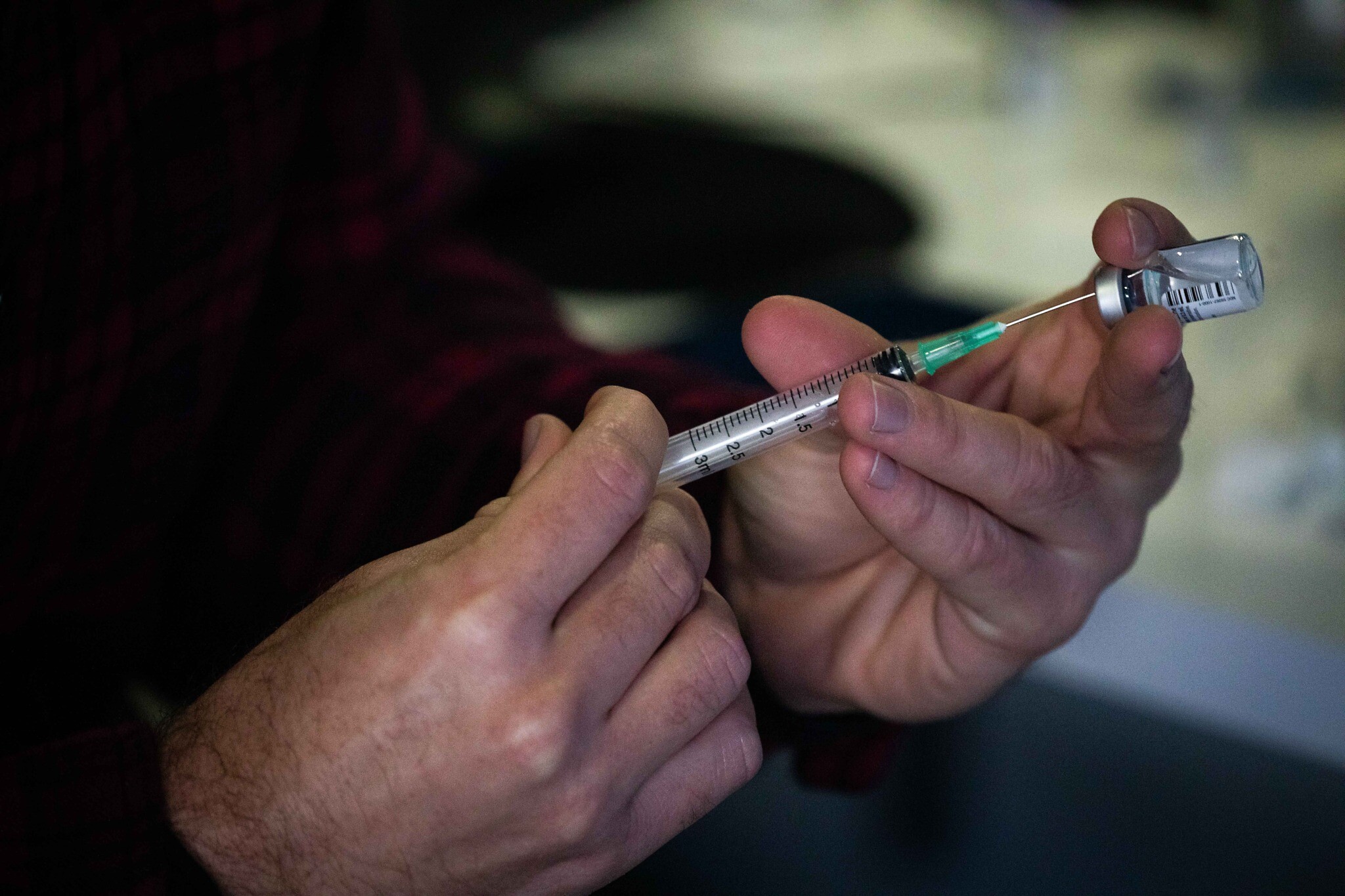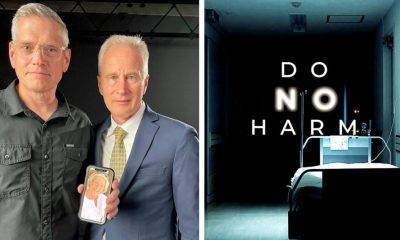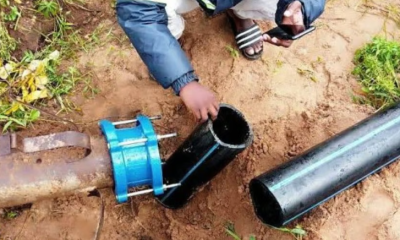Covid-19
How COVID protocols killed my 19-year-old daughter –distressed father
Published
9 months agoon

In an exclusive interview with The Defender, Scott Schara recounted how his daughter, Grace, died after she tested positive for COVID-19 and a Wisconsin hospital administered a series of drugs and treatments, without the parents’ permission, that he believes directly resulted in her death.
The parents are suing the hospital and some of its doctors and nurses.
Those are the words of Scott Schara, father of Grace Naomi (Emily) Schara, who died on Oct. 13, 2021, at age 19 at Ascension St. Elizabeth Hospital in Appleton, Wisconsin.
Grace died just days after she tested positive for COVID-19 and went to an urgent care facility where she was treated for low oxygen levels.
Since Grace’s death, Schara has become an advocate for victims of the protocols and their family members, launching a website and podcast, and producing a documentary detailing Grace’s and other victims’ stories.
Grace’s ordeal began on Oct. 1, 2021, when she tested positive for COVID-19 using a home testing kit. Five days later, her oxygen saturation had dropped to 88% as shown on the pulse oximeter her parents purchased in accordance with the Front Line COVID-19 Critical Care Alliance’s (FLCCC) COVID-19 treatment protocol.
READ ALSO: COVID vaccine linked to miscarriages, stillbirths among pregnant women
According to the protocol, hospitalization is recommended if oxygen saturation drops below 94%. Schara, however, now questions this recommendation.
“I’m not throwing FLCCC under the bus at all, but the fear propaganda influenced my critical thinking,” he said. “If you’re going to start measuring something, you’ve got to know what to measure against, not a number someone throws out.”
“What I’ve learned subsequently is when a person catches a cold or flu, their oxygen saturation naturally drops,” Schara said. He recounted being hospitalized with COVID-19 and low blood oxygen levels around the same time as his daughter, at a different hospital where he “just about died.”
Schara learned through his research that certain individuals have a genetic predisposition to produce low oxygen saturation, reasoning Grace likely inherited this trait from him. “It was a really foolish move on our part to even buy that [pulse oximeter] tool,” he said.
When Grace was transferred from the urgent care facility to St. Elizabeth’s Hospital, the emergency room physician told him Grace would be placed “on oxygen and steroids for three or four days and she’ll be home.”
Schara said he was by Grace’s side at the hospital from Oct. 6-10, 2021, when he was “escorted out by an armed guard.” Following this, COVID-19 hospital protocols were implemented, which he alleges were driven by financial interests.
According to Schara, Grace was administered Precedex, a sedative produced by Pfizer “that should never be used with COVID.” However, “they use it because their goal with COVID is dollars and the main dollars are for getting somebody on a ventilator — and they have to be sedated to be put on a ventilator,” he said.
READ ALSO: How protests help defeat COVID vaccine mandate in schools
“They asked my wife and I five different times for a pre-authorization to put Grace on a ventilator,” Schara said. “We never approved it, nor should anybody approve a ventilator when somebody has a COVID diagnosis. A ventilator has a 90% kill rate with COVID, so why do it? And it’s simply because of the financial incentives.”
“If Grace was agitated at this time to warrant sedation, it was because one or more of the Professional Defendants did not properly account for Grace’s Down syndrome which makes using a breathing apparatus, such as a nasal cannula, a Vapotherm, and some breathing masks, difficult to wear.”
Schara said that “In that light, [the hospital] told the truth relative to the first cause of death on Grace’s death certificate, which they listed as ‘acute respiratory failure with hypoxemia,’ which means ‘low oxygen.’”
On the day of Grace’s death doctors requested, for the fifth time, pre-authorization for a ventilator, which was again refused by her family, Schara said. Following this, the doctor told them, “Grace had such a good day yesterday,” although her family subsequently discovered she “was already sedated four days at this point.”
The doctor advised them to work on Grace’s nutrition. “Still trusting the white coat,” Schara said, they approved a feeding tube for Grace.
“Grace was getting the maximum allowable dose of Precedex, two doses of lorazepam, and morphine, which nobody could have survived. That’s what you give hospice patients in their last half hour of life,” he said.
According to the lawsuit, “At no time did Scott or Cindy [Grace’s mother], as Grace’s medical power of attorney, consent to or discuss with Dr. [Gavin] Shokar, or any other physician, a Do Not Resuscitate order,” or palliative care or comfort care.
Schara described the morphine package insert warning to not combine it with the other two medications Grace was receiving, because “if you do, you have to monitor the patient and have the reversal drug right there,” he said, adding “This did not happen.”
Schara said the legal system poses further obstacles, especially for individuals with limited financial means. Citing the long wait before the jury trial, he said, “Justice should not take a long time. That’s another thing that [the legal system] is set up for: they want to bring you to bankruptcy with these lawsuits.”
| ReplyReply allForward |
You may like


‘They lied to us about COVID-19 vaccine’– Man speaks on experience


Man injured by Pfizer COVID-19 vaccine wins ‘landmark’ claim against employer


Covid vaccine victims sue Pharmaceutical company £80m for injuries


How Big Pharma monitored, suppressed dissenting voices on COVID-19 vaccine policy


Doctors, activists, others intensify calls to stop COVID-19 vaccine shots


Filmmaker using camera to tell stories of COVID-19 protocol victims
Trending

 Aviation1 week ago
Aviation1 week agoJust in: FG suspends all Dana Air operations

 Inspirational7 days ago
Inspirational7 days agoPastor Chris Oyakhilome: A Healing Minister Dedicated to Enhancing Public Health

 Featured6 days ago
Featured6 days agoGov, Abiodun appoints Chess master, Onakoya sports ambassador

 Crime6 days ago
Crime6 days agoVandalism: Osun water corporation appeals to residents

 Featured6 days ago
Featured6 days agoOsun PDP chieftain, Abbas resigned from party

 Business5 days ago
Business5 days agoZenith Bank shareholders approve Holdco structure

 Editorial3 days ago
Editorial3 days agoGovernor Obaseki Increases Minimum Wage to N70,000 in Edo State

 Business2 days ago
Business2 days agoNNPC says fuel queues to be cleared by Wednesday

